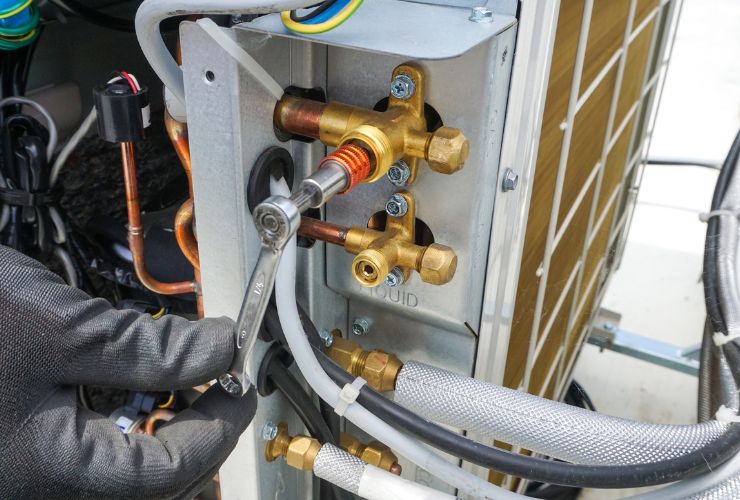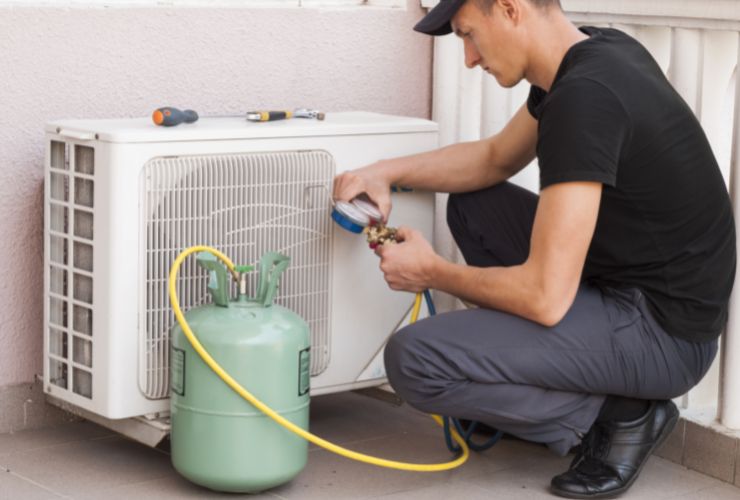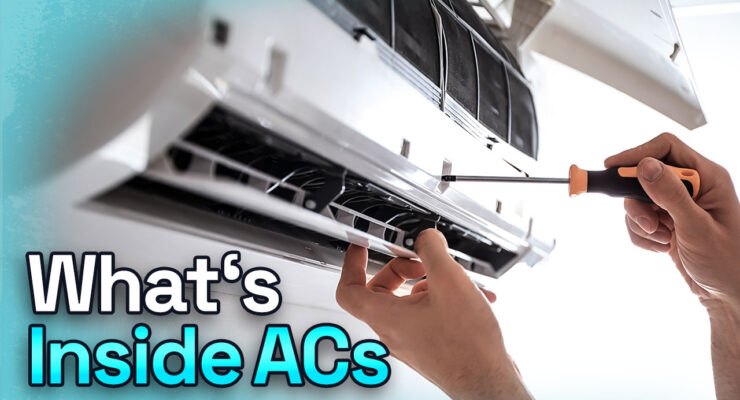Fast read
Refrigerant is a key component of an air conditioner used to generate cool or hot air that circulates in your house. It can be found in two main forms: liquid or gas. It absorbs heat from the surrounding air and converts it into cool air when combined with the other components of your system.
The refrigerant is located in the air conditioner's copper coils. It then travels to different system parts, changing its form as it moves from low-pressure gas to high-pressure liquid. As this process is carried out, the refrigerant will absorb and release cold or heat along its path.
Several different types of refrigerants are used in various types of systems. This includes CFCs, HCFCs, HFCs, Hydrocarbons, and Carbon dioxide (CO2). Choosing the appropriate refrigerant for your refrigeration or air conditioning system is important.
Have you heard the term air conditioner refrigerant? What is this?
Several components make up your air conditioner which enables your unit to run smoothly. Each plays a vital role in the effectiveness of your system and one of these key components is the air conditioner refrigerant. In simple terms, refrigerant generates cool or hot air that circulates via the unit and heats or cools your home.
How is it used?
Air conditioners operate in a remarkably similar way. The reverse cycle style removes heat from the air outside your home, transfers it to the inside in the heating cycle, and transfers heat from your home and transfers it to the outside in the cooling cycle.
The air conditioner refrigerant is a key component of an air conditioner that makes this heat transfer possible. Also used in fridges, which are air conditioning heat pumps – reversed.
The refrigerant can comprise different chemical components, such as CO2. Usually, it’s a fluid circulated through a pipe system in the equipment, using coils to absorb hot or cold air and then releasing it after undergoing a transfer process.
Many different air conditioner refrigerants exist, but the most common ones used in air conditioning systems today are hydrofluorocarbons (HFCs) such as R-410A, R-134a, and R-407C. These refrigerants are considered safer for the environment than the older refrigerants they replaced, such as chlorofluorocarbons (CFCs) and hydrochlorofluorocarbons (HCFCs), which were found to be harmful to the ozone layer.

How does it work?
Air conditioners have four main parts: a compressor, a condenser, an evaporator, and an expansion valve. They use refrigerants to cool down a room by changing the refrigerant’s state.
- To cool down a room, the air conditioner compresses the refrigerant gas with electricity, which makes it hot and high-pressure.
- Then, the hot refrigerant gas goes to the outdoor condenser and releases heat to the outside, which turns the gas into a liquid.
- The liquid refrigerant flows through an expansion valve that reduces its pressure, causing it to expand rapidly.
- The expanded refrigerant goes to the evaporator, where it absorbs heat from the indoor air, making it cool down.
- To heat a room, the AC unit works in reverse. It extracts warm air from outside, which goes through a heat exchanger to warm up the indoor air while expelling cold air outside. This cycle continues repeatedly
So if you stand in front of an outdoor air conditioner unit in operation, you can tell in what cycle it is operating. If it expels hot air, it’s in a cooling cycle, and if it expels cold air – it’s in the heating cycle – simple.
Do refrigerants work in all temperatures?
If you suspect that your air conditioner has a refrigerant leak, call a professional to come and repair the unit as soon as possible. By acting quickly, you can reduce the amount of air conditioner refrigerant gas entering the environment.
Not only are refrigerants potentially damaging to the environment, but they can also harm human health if not handled properly.

Types of refrigerants?
Chlorofluorocarbons (CFCs)
CFCs, such as R-12, were commonly used as air conditioner refrigerants in the past. But have been phased out because of their negative impact on the ozone layer.
Hydrochlorofluorocarbons (HCFCs)
HCFCs, such as R-22, are also being phased out because of their negative impact on the ozone layer.
Hydrofluorocarbons (HFCs)
HFCs, such as R-134a and R-410A, are commonly used in modern air conditioning units and refrigeration systems. They do not have a significant impact on the ozone layer. But they are potent greenhouse gases that can cause climate change.
Hydrocarbons
Hydrocarbons, such as propane (R-290) and butane (R-600a), are more and more used as refrigerants. This is because of their low global warming potential and high energy efficiency.
Carbon dioxide (CO2)
CO2, also known as R-744, is a natural refrigerant gaining more use because of its low environmental impact and high energy efficiency. Commonly used in small refrigeration systems, such as refrigerated display cases.
So which refrigerant is your air conditioner using?
The main way to tell which refrigerant your system uses is to check the large sticker on the compressor or evaporator. As stated above, you’ll need to look over these stickers before changing/replacing the refrigerant.
From an environmental point of view, CO2 is the least harmful refrigerant, as it occurs in abundance in the natural environment and does not harm the Ozone layer.



